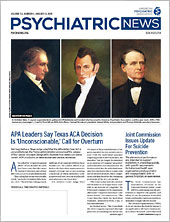Making use of data collected from the Adolescent Brain Cognitive Development (ABCD) Study, researchers have compiled one of the first detailed accounts on the prevalence of eating disorders in children aged 9 and 10. The results, published November 26, 2018, in JAMA Pediatrics, estimate that 1.4 percent of children at these ages have an eating disorder, primarily related to binge eating.
The ABCD Study, supported by the National Institutes of Health, is a nationwide research project examining brain development and child health. Over 11,000 children have been enrolled in the study to date (see box). Investigators will take brain images and conduct other clinical and behavioral assessments over the next decade to see how biological, environmental, genetic, and social factors affect brain development.
Aaron Blashill, Ph.D., and his team at San Diego State University’s Body Image, Sexuality, and Health Lab analyzed data from 4,524 ABCD participants.
All participants and/or their parents or guardians took the computerized Kiddie Schedule for Affective Disorders and Schizophrenia (KSADS) upon enrolling. This comprehensive assessment includes a section that screens for potential eating disorders. The KSADS enables physicians to diagnose anorexia nervosa, bulimia nervosa, binge-eating disorder, other specified feeding and eating disorders related to bulimia, and other specified feeding or eating disorders related to binge eating.
Overall, 1.4 percent of the children had diagnoses of any eating disorder. The prevalence of individual disorders was 0.1 percent for anorexia nervosa, 0 percent for bulimia nervosa, 0.6 percent for binge-eating disorder, 0.1 percent for other specified feeding and eating disorders related to bulimia, and 0.6 percent for other specified feeding or eating disorders related to binge eating.
(For comparison, the National Institute of Mental Health estimates the prevalence rates of eating disorders in adults to be about 2.8 percent for binge-eating disorder, 1 percent for bulimia nervosa, and 0.6 percent for anorexia nervosa—though these are older data.)
In general, girls and boys had similar rates of eating disorders; slightly more boys were diagnosed than girls.
“We were surprised at this finding, since eating disorders are more common in girls at older ages,” said lead study author Katie Rozzell, a graduate student in Blashill’s group. “This gives us some information to suggest that what goes on hormonally and socially with women during puberty contributes to an increased risk of eating disorders.”
Fortunately, the design of the ABCD Study will enable Rozzell to keep monitoring these children and see how their behaviors change over time. The researchers hope that the 10-year study will also provide a good snapshot of how and when eating disorders emerge during adolescence and young adulthood. ■
An abstract of “Prevalence of Eating Disorders Among U.S. Children Aged 9 to 10 Years: Data From the Adolescent Brain Cognitive Development (ABCD) Study” can be accessed
here.

